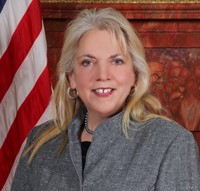LIFE SPAN AND CARE NEW ENGLAND

V. SUSAN SOSNOWSKI
How would a merger of Lifespan and Care New England affect Rhode Island’s health care system and workers? I have serious concerns.
The two largest health systems in the state want to merge into one even larger health care system that would control 80 percent of the hospital market, including seven of the nine not-for-profit hospitals in the state. Not only would the new entity control hospital care, it would largely control the physician market as well.
Lifespan and CNE talk about improved quality, reduced cost, and improved access. However, the growing body of evidence suggests that more caution and scrutiny towards the claims of Lifespan and CNE are warranted. Typically after such transactions, costs go up, quality erodes, patient satisfaction is neutral or worse, and increasingly wages are suppressed.
As the Office of the Health Insurance Commissioner’s report on the proposal states, “The literature shows that hospital mergers do not generally produce savings or quality improvements for consumers.”
The report cites the findings of a 2020 Medicare Payment Advisory Commission, or MedPAC, report completed at the request of Congress, which concludes: “The preponderance of evidence suggests that hospital consolidation leads to higher prices. These findings imply that hospitals seek higher prices from insurers and will get them when they have greater bargaining power.”
In recent history, the Federal Trade Commission has successfully sued to block 10 hospital mergers, nine of which had lower market concentration than the proposed Lifespan and CNE merger. Meanwhile, the parties are spending millions of dollars in consultants and legal fees to convince the FTC and state regulators that this will somehow be different.
The proposed new health care behemoth would have extraordinary power and influence to shape regulation and legislation in its favor. Lifespan already has substantial power as evidenced by its recent successful campaign to keep Brigham and Women’s from merging with CNE. Additionally, Rhode Island is essentially a one payer state already, with Blue Cross Blue Shield controlling over 70 percent of the health insurance market. There would obviously be incentive for a one payer state and a one provider state to restrict choice and control prices.
All of this makes it “critical,” as the OHIC report states, that there be “strong regulatory oversight” associated with any approval of the merger. It concludes that while the proposed merger “presents a compelling set of opportunities,” its risks are “significant and should command careful attention by regulators and the public.”
OHIC sets out baseline criteria for a regulatory oversight model. Its recommendations include comprehensive price caps, quality incentive requirements, adoption of advanced value-based purchasing, health equity improvement requirements, and a model for sustainable funding. That is a good starting point.
If this proposed merger proves too risky, it must not proceed. If it does move forward, we must have robust protections in place for patients and workers.
My colleagues in government must remain vigilant in protecting our health care system and avoid making a mess that might be impossible to clean up.
Senator V. Susan Sosnowksi is the Chair of the Senate Committee on Commerce and represents district 37, New Shoreham and South Kingstown.
